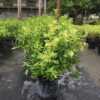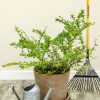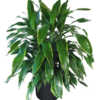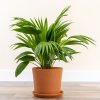Description
Beautiful Blooms that Will Fill the Summer Air’s Night with FragranceThe Night Blooming Jasmine is a wonderful plant and can be a great addition to the front of your home, as it is very welcoming. Also known as the ‘Lady of the night,’ this plant produces an amazing aroma every time it blooms, typically four times a year. If you take the right care for the Night Blooming Jasmine, then it is a very rewarding experience. They will look amazing wherever you place them within the house. Caring for Cestrum NocturnumCestrum Nocturnum has wide-spreading roots; to take care of them properly, you must space them further apart so the roots can grow properly. The plant is considered one of Hawaii’s most invasive plant species. You can plant them in spring, so they don’t have to face frost.LightThis plant needs high amounts of direct sunlight. It would be best if you aimed to give it a minimum of six hours of direct sunlight. If you cannot give it direct sunlight, then the plant can also do very well with partial shade. However, if the shade is excessive, that may affect the quality and frequency of the volume of the blooms. SoilWhen choosing the soil for your Night Blooming Jasmine, you must ensure that the soil is draining well. The best option is to choose light and loose sandy soil. That way, your plant will get all the nutrients it needs, and the moisture will not affect its growth. WaterThis plant loves moisture. You must water it frequently to ensure that the plant grows properly and produces the kind of blooms you are hoping for. While the plant is still young, you may want to saturate it with plenty of water throughout the week. Then as it grows, you can water it weekly. In the winter, you do not have to water the plan excessively and keep it to a minimum. FertilizerThis plant needs fertile soil to grow to its maximum potential. To improve the plant’s fertility, you can add fertilizer to the soil every month while the plant is still young. If you add fertilizers during spring, then that will help give your plants all the nutrients they need in their growing stage. Common IssuesThe Night Blooming Jasmine is toxic to animals and humans. The poisonous nature is not just limited to some parts of the plant; the entire plant is poisonous. If you ingest the plant, you may have to face gastrointestinal symptoms. Other than that, the aroma of the blooms can also spark respiratory problems in some people. On the other hand, these plants are very sturdy, and not many things affect them. Let’s take a look at all the pests and diseases that can harm the plant. PestsPests generally do not cause a lot of harm, but insects such as Aphids or Caterpillars can be dangerous. To get rid of them, you can blast your plants with a stream of water or use insecticidal soaps. Neem oil is also an effective solution to get rid of these insects. DiseaseDiseases like Fusarium Wilt are common in Poisonberry. This disease is prominent when you can see discolored patches and wilting leaves. The treatment of this disease is to use a mixture of baking soda and water. Spray it all over your plant, which will eliminate the disease. PruningIf you are planning to prune your plant, the best time is in Fall, right after the flowering stages. You can prune your plants in September. If you prune the plant properly, that will promote growth, and you will find a bushier plant. Pruning will also help curtail the invasive traits of the seeds of the berries. This way, the feeding birds won’t disperse them. PropagationYou can propagate the plant with the help of cuttings. You can keep the cuttings of the new plant and keep them in water until roots sprout. Once you see the roots, you can keep them in a pot with fertile soil. Make sure the plant receives high amounts of sunlight so it can grow quickly. Potting / RepottingTo plot your Night blooming jasmine, you need to keep certain things in mind. For instance, you must space out your plants properly. There should be at least four and six feet of space between the plants. To report the plant, you can keep it in a container, and when the plant starts to grow, you can remove it from the container into a bigger pot. Ideally, you should repot your plant every two years so the roots are not tangled and you can avoid root-bound conditions.





